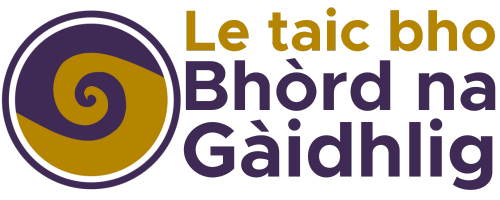(For use alongside our Gaelic Place-Name Policy)
Last updated: March 2020
Executive Summary
These are recommendations for spelling common words used in place-names and signage.
You can download a PDF of this document here.
1. List of Spellings
1.1 Elements
| Form | Notes |
| Àird | when meaning ‘height’ or ‘headland’ |
| Annaid | not Annait |
| Bac | not Bachd (from Norse bakkr or Old Irish bacc) |
| Bodha | not Bogha (in sense of submerged rock) |
| Cair | not Cathair [1] |
| Geàrraidh | not Gearraidh |
| Geodha | when as a discrete word (but –geo when as part of a name of Norse origin) |
| Giuthas | not Giubhas (from Old Irish giús, with ‘inorganic hiatus’) |
| Leac, Leacainn | not Leachd, Leachdain(n) (from Old Irish lecc) |
| Sìthean | not Sìdhean or Sidhean |
| Sloc | not Slochd |
| Srath | not Strath |
| Rubha | not Rudha or Rugha (from Old Irish ruba) |
1.2 Variant Spellings
The following variant spellings are to be used according to local practice or dominance:
| Acairseid or Acarsaid |
| Laimhrig or Laimrig [2] |
| Siadar or Seadar |
| Uamh or Uaimh |
2. Spelling of Individual Place-names
The following place-names occur multiple times and should be spelled accordingly:
| Aineort | not Ainort |
| Grianamul | not Greanamul |
3. Spelling of Individual Surnames
| Macfee | Mac-a-phì |
| MacInroy | Mac-an-Ruaidh |
[1] Cathair and *cair are in fact two distinct Scottish Gaelic words which have been confused over a long period in ways not yet fully understood. Cathair is most common in Wester Ross and denotes a perceived ‘fairy seat’ or some other naturally occurring seat. (E.g. A’ Chathair Dhubh (NC826626)) *Cair is a separate term generally used to denote ‘an enclosed, defensible site’ (E.g. Kirkcaldy ~ Cair Chaladain (NT277913)). Cf. Taylor with Márkus, Place-names of Fife vol. 5, p. 316-318 and James 2011, 63
[2] “There are several variant forms of this word. Laimrig seems to have a north-westerly distribution and occurs in Lewis, Skye and South Uist. A closely related form, lamraig, with non-palatal -r-, is found in Wester Ross… it is also recorded in dictionaries along with laimrig” Cox 1997, 53-4.

